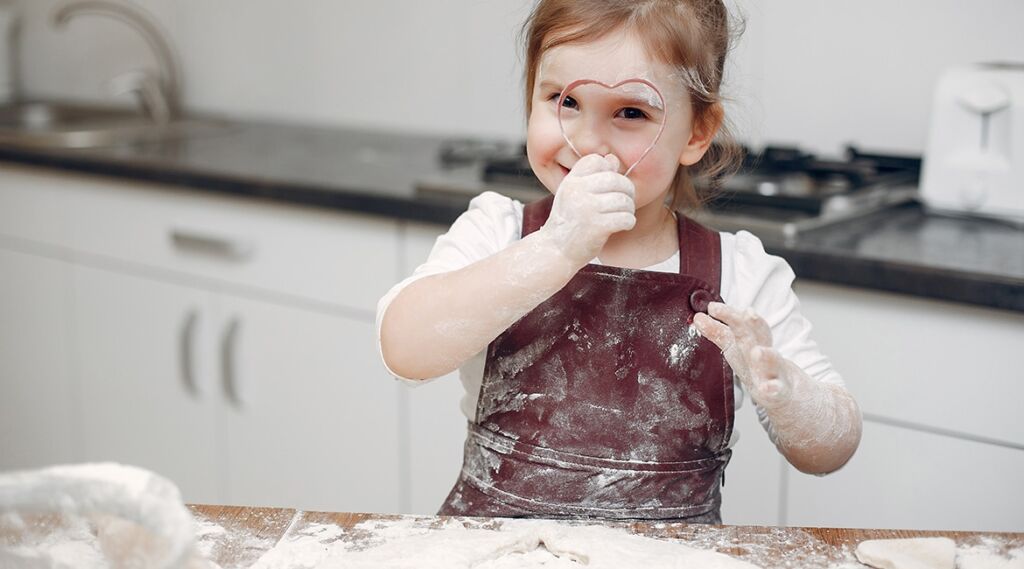As much as you love those gummy smiles, there comes a time when every baby will start to get their tiny pearly whites. Teething is a natural process that happens to every child at some point in their first year; but because each little teether can have a different experience, parents can sometimes worry if their child’s symptoms are normal. To help ease the teething process, follow this guide to knowing everything you can about those tiny chops.
Teething Timeline
Did you know that baby actually begins building teeth while still in the womb? It’s true! In fact, some children can begin to teeth in the first month, these teeth are known as neonatal teeth. It’s more common, however, for your baby to get their first tooth at 6 months. Research shows you shouldn’t be alarmed, though, even if your baby doesn’t get a tooth until 12 to 18 months. The normal timeline for teething can be different for every child, so as long as your baby begins the teething process somewhere in that first year and a half, it’s perfectly normal. Contrary to popular belief, the first teeth that poke through are actually the incisors, not the molars. Your child’s molars will begin to sprout anywhere between 14 and 19 months. The cuspids (known as the canines) will make an appearance around 16 to 24 months. By the time your little one reaches the age of 3, they will have a full set of 20 teeth. If your child reaches this milestone and hasn’t begun teething, it’s definitely imperative to let your doctor know. At 4 and 5 years, the jawline grows and allows for more room for bigger teeth. By age 6 and until your little one is 12, they can lose baby teeth and will have permanent teeth follow in place. Around age 12, your child will have a full set of permanent teeth! So exciting!

Growing Pains
Though it’s so exciting to see your babe sprout those first, adorable teeth, the process can leave your baby feeling irritable, inconsolable and some symptoms may even resemble an illness. As your baby and grows and begins to make contact with many different people, it can be hard to tell if a baby is sick or if he is teething. Teething makes your baby’s gums swollen and painful. Symptoms to be on the lookout for are:
- Drool. Your baby may begin drooling and putting his hand in his mouth to calm the pain. If your baby is older than 6 months, this can be a sign of teething.
- Swollen, red gums. Inflammation of the gums is a definite sign.
- Biting. Your baby may bite down hard while nursing or look for something to chomp down on.
- Low-Grade Fever. A fever below 100°F, could mean teething but anything higher is not related to teething and should be consulted with your pediatrician.
- Runny nose. Your child’s nose might run more when their teething.
- Rash. All that drooling could give your baby a rash around their mouth.
- Ear pain. Though countless moms swear that ear infections accompany teething, research says that the symptoms of teething pain can look like an ear infection with pulling and tugging on the ear but is actually just caused by discomfort, not infection.
Moms Know Best
Some parents hit it lucky and their baby gets their teeth without any interruption to their normal routine. On the flip, it can be just awful to watch your youngster go through the pain associated with teething. Luckily, there are lots of tried and true tips that have been passed down during the years from moms who’ve spent the nights battling the pain of teething. Here’s what they report works well:
- Teething Toys and Rings. Designed specifically for teething, the toys help itch the gums so your tot finds brief periods of relief from the ache.
- Warm Washcloths. Putting your finger in the cloth and letting your baby gnaw is one of the best ways to relieve teething pain.
- Frozen Foods. For older babies, try frozen bananas or veggies placed in a mesh feeder.
- Pain Management. If your baby isn’t tolerating any of the above, talk to your pediatrician about giving a dose of acetaminophen.
Special Note: Teething gels of the past were once thought to be safe. But recent 2016 studies show that teething gels, especially those with benzocaine, lidocaine and homeopathic remedies actually pose lots of dangers to your little babe. Try the natural teething remedies above as a safe alternative. Also on the outs? Amber teething necklaces due to their risk of strangulation and mixed reports about their effectiveness.
Dental Health Starts Young
Making sure your baby goes through life with an awesome set of teeth means beginning the process earlier than you might think. Never let your little one head to bed with milk or juice, doing so could cause the sugary beverages to create cavities. If baby isn’t old enough to brush, clean their teeth with a little washcloth each day. After brushing begins make sure your little one brushes their teeth at least twice a day and make sure to find a pediatric dentist. The American Academy of Pediatric Dentistry (AAPD) says your baby should visit the dentist when they are 1 year old or six months after their first tooth appears in their mouth. Continue visits every six months through your child’s entire life. Good dental hygiene is best modeled by everyone in the household and sets the precedent for years to come. Keep up the great work!



